Disease concepts and treatment by tribal healers of an Amazonian forest culture
- PMID: 19821968
- PMCID: PMC2774292
- DOI: 10.1186/1746-4269-5-27
Disease concepts and treatment by tribal healers of an Amazonian forest culture
Abstract
Background: The extensive medicinal plant knowledge of Amazonian tribal peoples is widely recognized in the scientific literature and celebrated in popular lore. Despite this broad interest, the ethnomedical systems and knowledge of disease which guide indigenous utilization of botanical diversity for healing remain poorly characterized and understood. No study, to our knowledge, has attempted to directly examine patterns of actual disease recognition and treatment by healers of an Amazonian indigenous culture.
Methods: The establishment of traditional medicine clinics, operated and directed by elder tribal shamans in two remote Trio villages of the Suriname rainforest, presented a unique investigational opportunity. Quantitative analysis of clinic records from both villages permitted examination of diseases treated over a continuous period of four years. Cross-cultural comparative translations were articulated of recorded disease conditions through ethnographic interviews of elder Trio shamans and a comprehensive atlas of indigenous anatomical nomenclature was developed.
Results: 20,337 patient visits within the period 2000 to 2004 were analyzed. 75 disease conditions and 127 anatomical terms are presented. Trio concepts of disease and medical practices are broadly examined within the present and historical state of their culture.
Conclusion: The findings of this investigation support the presence of a comprehensive and highly formalized ethnomedical institution within Trio culture with attendant health policy and conservation implications.
Figures

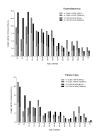

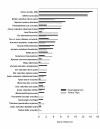
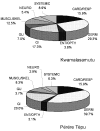

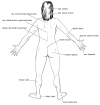

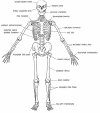
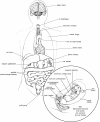
Similar articles
-
Substances, relationships and the omnipresence of the body: an overview of Ashéninka ethnomedicine (Western Amazonia).J Ethnobiol Ethnomed. 2006 Nov 10;2:49. doi: 10.1186/1746-4269-2-49. J Ethnobiol Ethnomed. 2006. PMID: 17096839 Free PMC article.
-
[The Sanumá-Yanomami medical system and indigenous peoples' health policy in Brazil].Cad Saude Publica. 2015 Oct;31(10):2148-56. doi: 10.1590/0102-311X00194414. Cad Saude Publica. 2015. PMID: 26735382 Portuguese.
-
Representations and care practices of professionals regarding indigenous use of alcohol.Cien Saude Colet. 2020 May;25(5):1809-1818. doi: 10.1590/1413-81232020255.34442019. Epub 2020 May 8. Cien Saude Colet. 2020. PMID: 32402022 English, Portuguese.
-
Ethnobotany and the future of conservation.Biologist (London). 2000 Apr;47(2):65-8. Biologist (London). 2000. PMID: 11190230 Review.
-
Skin diseases in indigenous population: retrospective epidemiological study at Xingu Indigenous Park (XIP) and review of the literature.Int J Dermatol. 2017 Dec;56(12):1414-1420. doi: 10.1111/ijd.13716. Epub 2017 Aug 9. Int J Dermatol. 2017. PMID: 28791692 Review.
Cited by
-
Childhood Vaccine Acceptance and Refusal among Warao Amerindian Caregivers in Venezuela; A Qualitative Approach.PLoS One. 2017 Jan 20;12(1):e0170227. doi: 10.1371/journal.pone.0170227. eCollection 2017. PLoS One. 2017. PMID: 28107501 Free PMC article.
-
A review of malaria transmission dynamics in forest ecosystems.Parasit Vectors. 2014 Jun 9;7:265. doi: 10.1186/1756-3305-7-265. Parasit Vectors. 2014. PMID: 24912923 Free PMC article. Review.
-
The role of traditional healers in tooth extractions in Lekie Division, Cameroon.J Ethnobiol Ethnomed. 2011 May 30;7:15. doi: 10.1186/1746-4269-7-15. J Ethnobiol Ethnomed. 2011. PMID: 21624132 Free PMC article.
-
"Two Cultures in Favor of a Dying Patient": Experiences of Health Care Professionals Providing Snakebite Care to Indigenous Peoples in the Brazilian Amazon.Toxins (Basel). 2023 Mar 3;15(3):194. doi: 10.3390/toxins15030194. Toxins (Basel). 2023. PMID: 36977085 Free PMC article.
-
Conceptions and practices of an integrative treatment for substance use disorders involving Amazonian medicine: traditional healers' perspectives.Braz J Psychiatry. 2017 Dec 18;40(2):200-209. doi: 10.1590/1516-4446-2016-2117. Print 2018 Apr-June. Braz J Psychiatry. 2017. PMID: 29267602 Free PMC article.
References
-
- Gajdusek D. Urgent opportunistic observations: the study of changing, transient, and disappearing phenomena of medical interest in disrupted primitive human communities. Health and Disease in Tribal Societies. 1977:69–102. full_text. - PubMed
-
- Rhodes R. Deadly Feasts. New York: Simon & Schuster; 1997.
-
- Balick M, Cox P. Plants, People, and Culture: The Science of Ethnobotany. New York: Scientific American Library; 1997.
-
- Lévi-Strauss C. The Use of Wild Plants in Tropical South America. In: Steward JH, editor. Handbook of South American Indians. Vol. 6. Washington: Bureau of American Ethnology; 1963. pp. 465–543.
-
- Zent E. PhD thesis. University of Georgia, Anthropology; 1999. Etnobotanica Hoti. Explorando las interacciones entre las plantas y el ser humano en el Amazonas Venezolano.
MeSH terms
LinkOut - more resources
Full Text Sources

